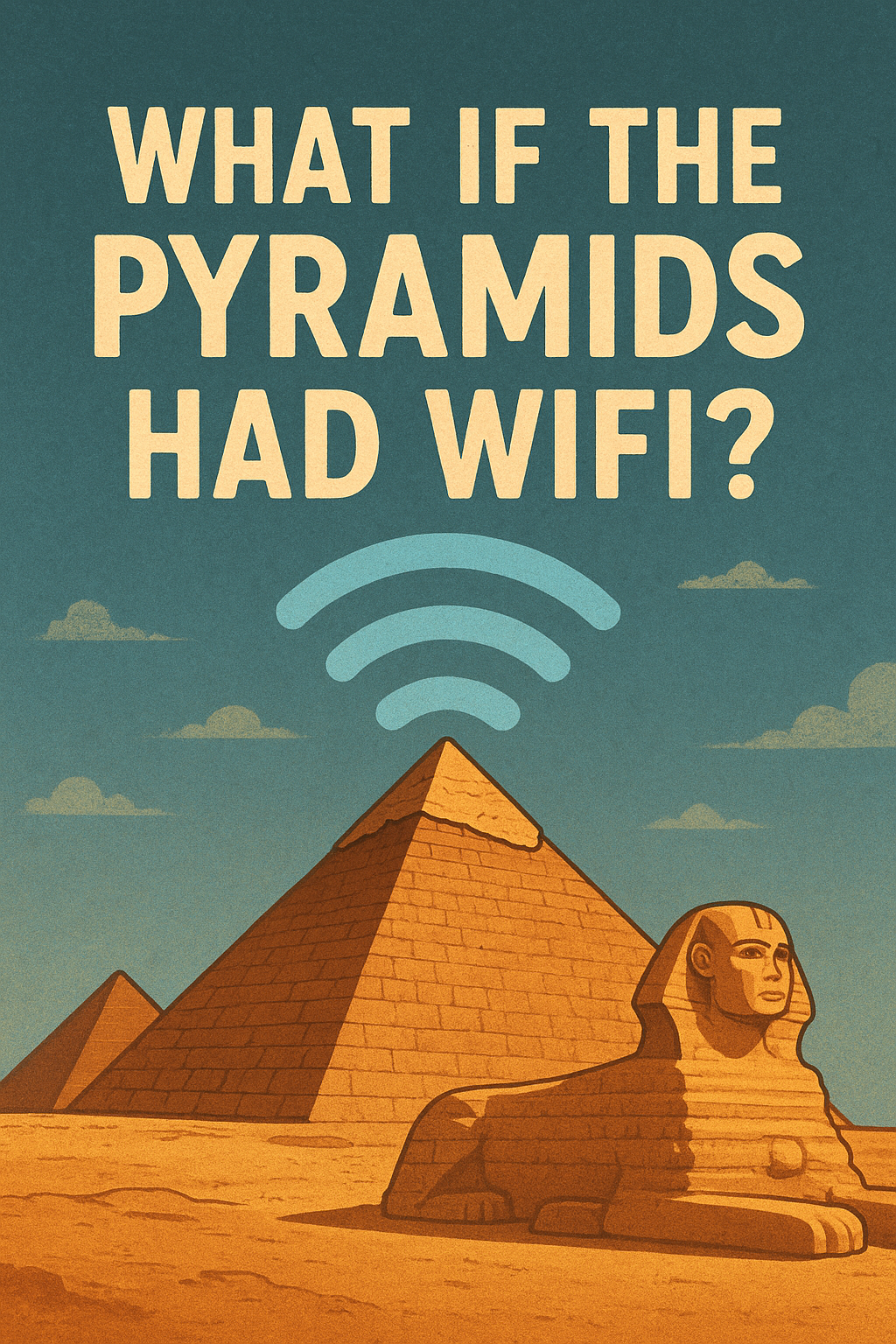What if the Pyramids Had WiFi?

The Pyramids of Giza are among the most fascinating and mysterious monuments in the world. Built over 4,500 years ago, they stand as a testament to human ingenuity, ancient engineering, and a civilization that still captivates our imagination. But what if these colossal stone structures weren’t just tombs of the Pharaohs — what if they had WiFi?
It’s a fun thought experiment that combines ancient history with modern digital life. Let’s dive into how the presence of WiFi inside the Pyramids could have changed history — and how it might look if tourists could log in today.
1. Pharaohs as the First Influencers
If the Pyramids had WiFi, ancient Egypt might have invented social media long before Silicon Valley. Imagine Pharaoh Khufu updating his followers: “Another day ruling Egypt. Check out my pyramid progress #GreatPyramid #RoyalLife.” Instead of carvings on stone, the stories of gods, victories, and rituals could have been live-streamed for the world to see.
The Pharaohs would have been the original influencers, with millions of followers not only across the Nile but perhaps across continents. History would not be recorded in hieroglyphs on papyrus but in tweets, reels, and viral dances.
2. Hieroglyphs Replaced by Emojis
The Egyptian writing system is already visually striking, but with WiFi, hieroglyphs might have evolved into emojis. The sun god Ra 🌞, the scarab beetle 🪲, and the eye of Horus 👁️ could all have been the ancestors of our modern digital language. Archaeologists today would be decoding not stone inscriptions, but endless chat logs filled with memes.
3. Tourism in the Age of Connectivity
Fast forward to the present — if the Pyramids had WiFi today, tourism would look very different. Instead of visitors quietly admiring the architecture, everyone would be on live video calls showing off the chambers to friends at home. TikTok challenges like “24 Hours in the Pyramid” would trend globally. And every selfie with the Sphinx would instantly hit Instagram with the caption “Lost in time, but not in WiFi.”
Local tour guides might even advertise: “Strongest signal inside the Great Pyramid — better than your hotel WiFi!” Egypt’s tourism industry would find a whole new marketing hook.
4. Archaeology with Google Maps
One of the biggest mysteries of the Pyramids is the existence of hidden chambers and passageways. With WiFi and smart technology, archaeologists could map them instantly using 3D scanning and share their discoveries live. Imagine tuning into a YouTube stream: “Watch us uncover a secret passage in real time — like and subscribe!”
Instead of painstaking decades-long excavations, the secrets of ancient Egypt might have been solved with a quick Google search.
5. The Ultimate WiFi Password
But here’s the real twist: what if the WiFi password itself was the treasure? Legends might not have been about hidden gold, but about the sacred access code to connect with the gods. “Thou who knowest the password shall be granted eternal bandwidth.”
Imagine the global rush if archaeologists one day announced: “We’ve finally cracked the pyramid’s WiFi password.” The internet would break.
A Blend of Past and Future
Of course, the Pyramids don’t have WiFi — and maybe that’s a good thing. Their mystery lies in silence, in the stones that have stood for millennia, untouched by the digital noise of the modern world. But imagining WiFi inside them allows us to see history through a playful lens, blending past with present.
The truth is, the Pyramids already connect us — not digitally, but emotionally. They link humanity across centuries, reminding us of what people are capable of achieving, with or without a strong signal.
So next time you visit Egypt and find your phone struggling to load, don’t be frustrated. Just remember: maybe the real power of the Pyramids isn’t WiFi, but their ability to keep us offline — and in awe.




